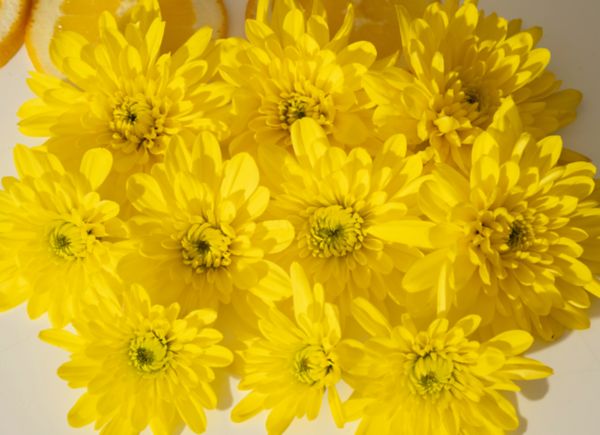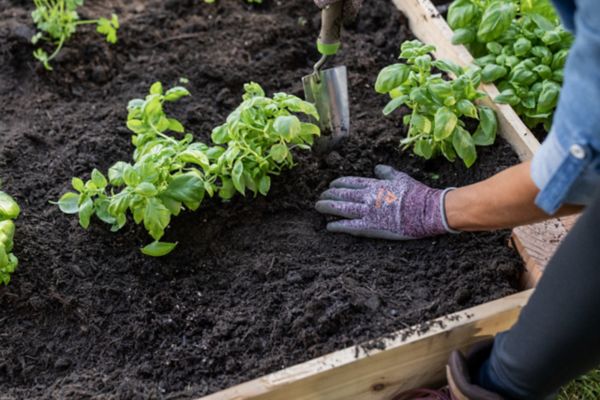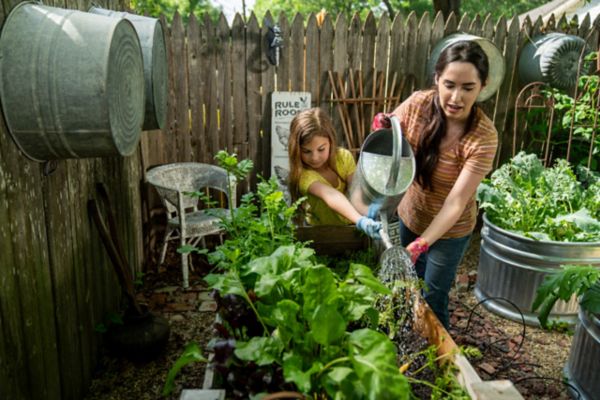How to Grow Spinach
Authored by Leah Chester-Davis
Spinach is a cool-season vegetable, so spring and fall are the best times to enjoy this versatile green in the home garden. Even if you have limited space, you can grow spinach in containers.
Spinach is a vegetable that once had a starring role in a popular cartoon series. A can of spinach bestowed great strength on a favorite cartoon character, Popeye the Sailor Man. Turns out Popeye may have been on to something. Spinach contains a substance that triggers a response similar to that of anabolic steroids. It also holds boatloads of vitamins, minerals, and flavonoids which contribute to its anti-inflammatory and cancer-preventing benefits.
This dark, leafy green can be eaten raw or cooked. It is a staple in salads. It pairs well with other greens or can stand alone. It is delicious with other additions such as bacon, green onions, mushrooms, and hard-boiled eggs with a balsamic vinaigrette to make a complete meal. It is a classic with strawberries, toasted almonds, and a poppyseed dressing. It can be lightly sautéed in garlic butter for a delicious side or tossed into omelets, quiches, casseroles, or many other dishes.
There are two types of spinach. One has smooth leaves. The other are savoy types, which have crinkly leaves. Semi-savoy types have leaves that are lightly crinkled.
About spinach
| Botanical name: | Spinacea oleracea |
| Common name: | Spinach |
| Plant type: | Hardy annual |
| Size: | 8 to 12 inches |
| Sun exposure: | Full sun; tolerates partial shade |
| Soil type: | Fertile, well-drained |
| Soil pH: | 6.5 to 8 |
| Hardiness zones: | 2a to 11b |
| Average first frost: | Varies by region |
| Average last frost: | Varies by region |
| Container friendly: | Yes |
| Beginner friendly: | Yes |
Growing
Spinach grows in many different soils but does best in fertile soil with lots of organic matter that is well drained. In the absence of a soil test (kits available from most county Extension centers), amend your soil with aged manure or compost.
Work the soil well, about 8 to 12 inches deep, before planting. This leafy green prefers neutral to slightly alkaline soil, a pH of between 6.5 and 8.0 and a sunny site, though it will tolerate some shade.
Spinach is a cool-season crop and will not tolerate hot temperatures. It is best direct sown into rich soil in the spring or in late summer for a fall crop. When the weather heats up, the plant typically bolts, which means it sends up flower stems that will produce seed, and the leaves become bitter.
Spinach is best grown as a fall crop.
Planting
Plant spinach when the weather is cool. This is one vegetable to plant before the last frost in the spring. Generally, plant it four to six weeks before the average last frost. In the fall, plant it six to eight weeks before the first frost. This may vary across the country so check with your local garden center or county Extension office for best planting times in your area and best varieties.
Sow seeds ½ inch deep and about 2 inches apart in well-drained, moist soil. If planting in rows, space the rows 12 to 18 inches apart. Or seeds can be broadcast (scattered) over garden beds. Gently cover the seeds with soil.
If the soil was prepared in the fall, Arkansas Extension says that seeds can be broadcast over frozen ground or snow cover in late winter.
Raised beds are ideal for spinach, helping facilitate good drainage, which can help reduce disease problems.
If planting in a container, make sure it has drainage holes. Use a quality potting mix for vegetables. Garden soil will be too heavy in a container. Plant 10 to 12 seeds per square foot or gently broadcast seeds over the surface. Thin as needed when seedlings appear.
To have a continuous supply for several weeks, plant spinach seeds every 1 to 2 weeks until the temperatures become too warm, about 80 degrees F.
When planting in early spring in colder climates, Penn State Extension recommends sheltering the seeds with a clear polypropylene cover for the first few weeks. Use some type of framework or support to keep the cover from direct contact with the spinach and to prevent stem damage if snow, rain, or ice builds up on the cover. Remove the cover when the weather warms. The best growing temperature is 50 degrees F to 60 degrees F, but young seedlings can tolerate temperatures as low as 15 to 20 degrees F.
Keep the water levels even and moist, not letting the soil become too dry, which increases chances of bolting. Water deeply and thoroughly early in the day so the foliage can dry during the day to reduce foliar diseases. As much as possible, water the soil and not the leaves.
Mulch the plants with untreated grass clippings or straw to help suppress weeds, keep the soil moisture levels even, and to keep the soil cool. Hand pull weeds to avoid cutting the vegetable roots with a hoe. As temperatures reach 70 degrees F, Penn State recommends covering spinach with a shade cloth to help both cool the soil and control insects.
As spinach grows, if you’ve planted thickly, thin out plants when they are an inch or two tall to give remaining plants 4 to 6 inches of space. When thinning the plants, save the plants you remove to toss into a salad.
Fertilizing
Soil that is amended with aged manure or rich compost may not require fertilizer. In the absence of a soil test, Texas A&M AgriLife Extension recommends an all-purpose fertilizer such as 10-10-10 at the rate of ¼ to 1/3 cup of fertilizer for every 10 feet of row. Mix the fertilizer into the soil about 3 to 4 inches before planting.
- When plants are about 2 inches tall, fertilize again by side-dressing (apply around the plant) with about ¼ to 1/3 cup of fertilizer for every 10 feet of row. Or use an organic fertilizer such as fish emulsion.
- Avoid using weed and feed fertilizers on food crops as it may kill them.
Controlling Pests, Diseases, and Other Problems
Among the insect pests that sometimes bother spinach are aphids and leafminers. Control aphids by removing infested leaves or plants or by spraying with a vigorous stream of water. Leafminers lay eggs on the underside of leaves. Remove leaves that have eggs. To prevent leafminer damage, Wisconsin Extension recommends putting floating row covers, supported by hoops or other measures, over the plants.
If insecticides are needed, look for organic options or those recommended for vegetable crops. Follow label directions and observe waiting periods between application and harvest times.
- Slugs can be a problem in very moist conditions. Keep an eye on your plants; if slugs appear it may be best to remove mulch.
- Downy mildew can be an issue. Select varieties that are resistant to downy mildew.
- Anthracnose and Cercospora leaf spot leave spots on upper sides of leaves and even holes. If you have heavy infestation, consider a fungicide. Follow label directions.
Harvesting and Storing
It typically takes 38 to 50 days (about 1 and a half months) until spinach is ready to harvest. Harvest during the cool of the day.
Individual spinach leaves can be harvested when they are at the baby leaf stage (about 3 inches) to larger mature leaves (about 6 inches). When harvesting at the earlier stage, it is possible to get several harvests. Simply pinch off the outer leaves when they are the desirable size. Do not harvest more than half of the leaves from the plant.
Later in the season, if harvesting the entire plant, cut at the base and remove the outer, older leaves. When the weather warms, the spinach will bolt. Remove the plants from your garden and add to the compost pile.
Storing
Spinach stores well in the refrigerator for a several days. Store quickly after harvesting and don’t wash before storing. Store in a plastic bag in the refrigerator. Add a paper towel to soak up any extra moisture. Wash just prior to using.
Spinach can also be frozen, and you will need to blanch it first. To blanch, Georgia Extension recommends washing the spinach greens thoroughly and cutting off woody stems. Blanch the greens for 2 minutes. Blanching means you scald the greens in boiling water. This will brighten the color, helps slow loss of vitamins, and stops enzymatic action that can result in loss of flavor, color, and texture. Add the greens to boiling water. When it returns to a boil, time for 2 minutes. Remove from heat. Cool the spinach by plunging it into ice water. Drain thoroughly. Pack into freezer bags or containers. Leave ½-inch of headspace. Label, seal, and freeze.
Spinach can also be dried or canned. A helpful, reliable source for food preservation guidelines is the National Center for Home Food Preservation.
It typically takes 38 to 50 days (about 1 and a half months) until spinach is ready to harvest.
Expert Tips
- The better your soil, the better your chances for healthy plants. Give your plants a jumpstart by thoroughly working your soil and amending with organic matter on a regular basis.
- Keep weed growth suppressed to give your plants a better chance to grow and thrive.
- Take advantage of the cooler days in spring and fall to get your spinach going. Succession planting, every week or two, is a good way to ensure you will have a harvest for a longer period.
- Check with your local garden center or county Extension office for best varieties and best times to plant for your region.
Frequently asked questions
What causes spinach to develop flower stalks?
What you are referring to is bolting, when the plant sends up flower stalks that will turn to seed. It typically happens when the weather is hot and dry, which also results in bitter leaves.
Are there any alternatives for those of us who have to deal with hot weather?
Look for slow-to-bolt varieties when buying seed, though you will still need to plant in cool seasons. A couple of substitutes for spinach, though they aren’t actually spinach, are Malabar and New Zealand spinach.
Is it true that spinach can prevent absorption of some minerals?
Raw spinach is delicious and safe to eat but it does have oxalates which can prevent the absorption of iron and calcium. Cooking spinach can reduce the level of oxalates.






